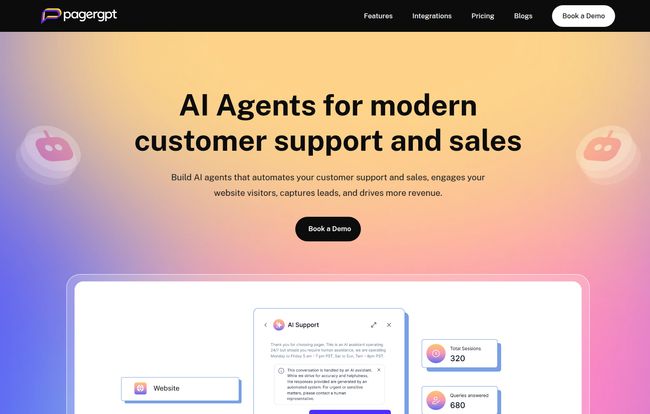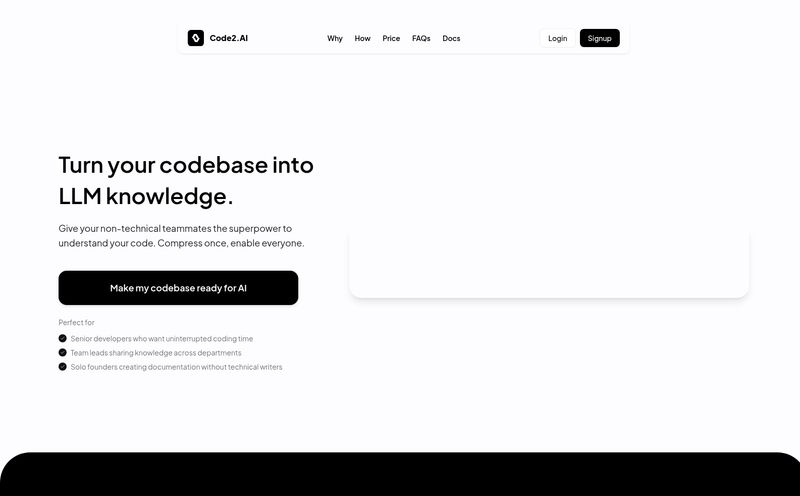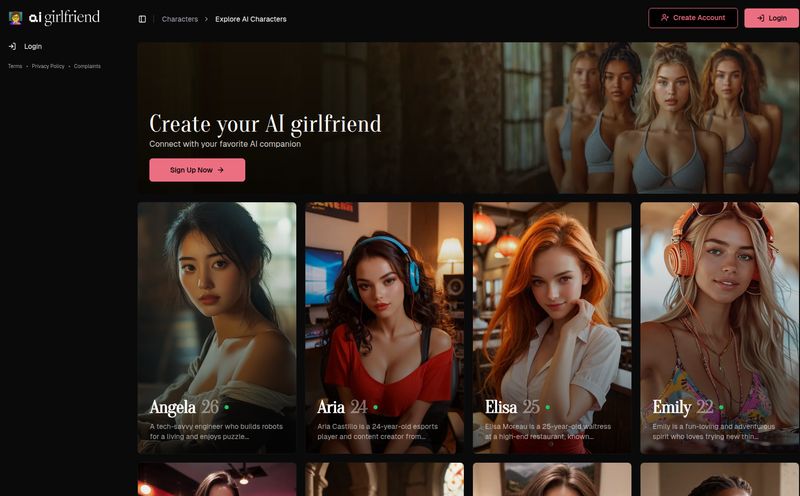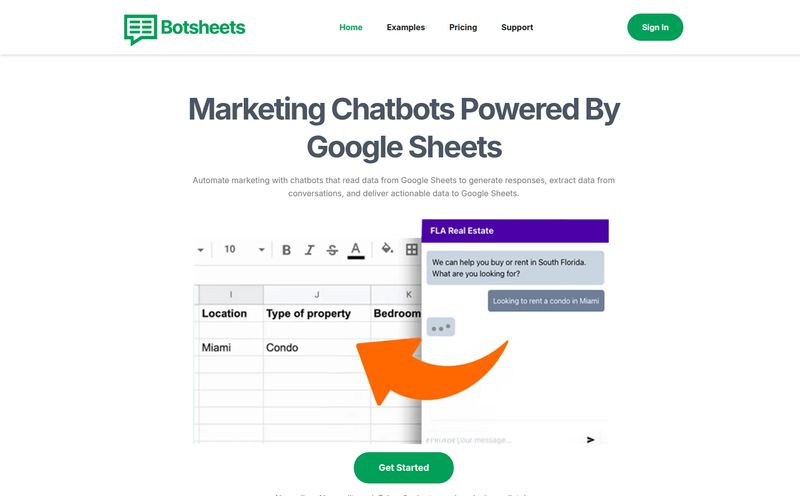We've all been there. Stuck in a customer support chat queue, number 47 in line, listening to hold music that sounds like it was composed in 1992. Or worse, trying to get a simple answer from a website's 'helpful' chatbot that can only understand three keywords and keeps looping you back to the FAQ page you already read. It's frustrating. For everyone.
For years, as someone who lives and breathes website traffic and user experience, I've seen businesses struggle with this. The dream is 24/7 support that's actually helpful. The reality has often been clunky, expensive software that requires a developer on speed dial. But then ChatGPT exploded onto the scene, and suddenly, the goalposts moved. The potential for truly intelligent, conversational AI became clear to everyone, not just us nerds in the tech space.
Which brings me to PagerGPT. The name itself is a mashup of old-school urgency and new-school tech. It makes a bold promise: build custom ChatGPT-powered bots for your website in seconds. No coding. Seriously? I've heard that one before. So, naturally, I had to take a look and see if it’s the real deal or just another tool riding the AI hype train.
So, What Exactly is PagerGPT?
At its heart, PagerGPT is a platform that lets you create your own AI agent, fed on your own data. Think of it like hiring a new support agent, giving them all your company handbooks, product docs, and website pages to study, and then letting them talk to your customers. Except this agent works 24/7, speaks over 95 languages, and never needs a coffee break.
The biggest hook here, and the one that got my attention, is the no-code promise. This isn’t for developers. It’s for the marketing managers, the startup founders, the customer support leads—the people on the front lines who know what questions customers are asking but don’t have the time or budget to commission a custom-coded solution. It’s about taking the raw power of models like GPT-4 and making them accessible.

Visit PagerGPT
The Features That Actually Matter
A features list is just a list. What matters is how those features solve actual, hair-pulling-out problems. Here’s my breakdown of what PagerGPT brings to the table.
Build a Bot in Minutes (They Aren't Kidding)
This is the core of the whole thing. The setup process is almost laughably simple. You can train your AI bot by feeding it information from various sources. Just upload files like PDFs and documents, or even just paste in your website's URL, and it will crawl the content. It’s less like programming and more like creating a curated library for your bot to reference. This means you can get a bot live on your site, answering questions based on your specific information, in the time it takes to brew a pot of coffee. That’s a powerful concept for agile teams.
The All-in-One Shared Inbox
Here’s something I’ve always found clunky with other systems: the handoff. You know, when the bot gets confused and has to pass you to a 'real person'. PagerGPT tackles this with a shared live chat inbox. The AI handles the first line of defense, answering the repetitive stuff instantly. But if a conversation gets complex or a customer explicitly asks for a human, your team can jump right into the same chat window. No lost context, no making the customer repeat themselves. It’s a unified experience, which is exactly what you want.
Integrations That Don't Cause Headaches
A chatbot is only as good as its ability to connect to the rest of your business. It can’t live on an island. PagerGPT seems to get this. They list integrations with the big players you'd expect: Slack, Microsoft Teams, WhatsApp, but also deeper business tools like HubSpot, Salesforce, Zendesk, and Intercom. This is what separates a simple widget from a core business tool. It means your bot can not only answer questions but also capture a lead and send it straight to your CRM, or create a support ticket in Zendesk. It connects the dots.
Analytics That Aren't Just Vanity Metrics
Getting a thousand chats a day means nothing if you don't know what people are asking. The analytics dashboard is designed to give you real insights. You can see the most common questions, identify gaps in your knowledge base (if the bot can't answer something, maybe you need to create content for it!), and track overall customer satisfaction. This data is gold for any SEO or content strategist. It's a direct line into the mind of your user.
Let's Talk Money: A Look at PagerGPT Pricing
Alright, the all-important question. What’s this going to cost? The pricing structure is pretty straightforward, which I appreciate. They offer monthly and yearly plans (with a discount for annual commitments, standard stuff). Here’s the breakdown:
| Plan | Price (Monthly) | Best For |
|---|---|---|
| Magic Plan | $0 / month | Startups or anyone wanting to test the waters. It’s limited (100 sessions, 1 bot) but it's free. A no-brainer to try. |
| Business Plan | $349 / month | Growing businesses that need more power. This is where you get more sessions (1000), more bots, more integrations, and the crucial live chat inbox. |
| Enterprise Plan | Custom | Large companies needing a comprehensive, tailored solution with things like dedicated support and custom session limits. |
My take? The Magic Plan is a fantastic, risk-free entry point. The jump to $349 for the Business plan might seem steep, but you have to weigh it against the cost of hiring even one part-time support person or the potential revenue from leads you're currently missing. If the bot can successfully automate support and capture qualified leads, that price tag could be a bargain.
My Honest Take: The Good and The Not-So-Good
No tool is perfect. Let's get down to the nitty-gritty. After playing around and looking through everything, here’s my balanced perspective.
What I really like is obvious: the simplicity and speed of the no-code setup is a genuine game-changer. The fact that it’s powered by advanced LLMs means the conversation quality is light-years ahead of the old rule-based bots. The integrations are solid, and the security compliance (ISO, SOC2, GDPR) is a huge plus, taking a major worry off the table for businesses handling customer data.
On the other hand, there are a couple of things to be aware of. The pricing model, while clear, has a big gap between the free and the main business tier. Some smaller businesses might find themselves in a tough spot between the two. Also, like many fast-growing SaaS platforms, some features are listed as 'coming soon', like SSO (Single Sign-On) on the Business plan. Not a dealbreaker for most, but something for larger teams to consider.
So, Who Is PagerGPT Actually For?
I see a few clear winners here:
- SaaS Companies: To handle onboarding questions and technical support, freeing up dev teams.
- E-commerce Stores: To answer product questions, check order statuses, and guide users to purchase.
- Marketing Agencies & Lead Gen Sites: To engage visitors, qualify them, and book meetings or demos automatically.
- Any business, big or small, that is tired of their support team answering the same 10 questions all day, every day.
If you're looking for a way to improve user experience on your site and make your team more efficient, this is a tool built for you.
The Verdict: Is PagerGPT Worth Your Time and Money?
In my opinion, yes. PagerGPT sits in a very sweet spot. It successfully bridges the gap between the insane power of modern AI and the practical needs of a business owner who doesn't have a PhD in machine learning.
It’s not just a fancy tech demo; it’s a practical tool designed to solve a very real, very expensive problem: scaling personal interaction. By automating the routine and freeing up humans to handle the exceptions, it delivers on the core promise of what AI in business should be. If you're on the fence, the free 'Magic' plan makes it a complete no-brainer to at least try. You've got very little to lose, and potentially a whole lot of time and sanity to gain.
Frequently Asked Questions
- 1. What counts as a 'session' in the pricing plans?
- A session is typically defined as a unique conversation between a visitor and your AI bot. Once a visitor starts chatting, that counts as one session, which usually has a time limit (like 24 hours) before a new conversation from the same person would count as a new session.
- 2. Do I really need to know how to code to use PagerGPT?
- Nope, not at all. That's the main appeal. If you can upload a document or copy and paste a URL, you have all the technical skills you need to build and train your bot.
- 3. What languages can the PagerGPT bot handle?
- The platform supports over 95 languages. This is a massive advantage for any business with an international audience, as the bot can automatically detect and respond in the visitor's native language.
- 4. How is my company and customer data protected?
- PagerGPT takes this seriously. They are GDPR compliant, and the images show certifications for ISO 27001 and SOC 2 compliance. This means they adhere to strict international standards for information security management.
- 5. How is this different from a basic live chat tool like Tawk.to or a social media DM?
- A basic live chat tool requires a human to be present for every single interaction. PagerGPT's AI bot automates the vast majority of those interactions 24/7, only bringing in a human when truly necessary. It's the difference between a simple telephone and a full-blown call center with an intelligent automated assistant.
Reference and Sources
- PagerGPT Official Website
- PagerGPT Pricing Page
- How Generative AI Is Transforming Customer Service (Forbes)



